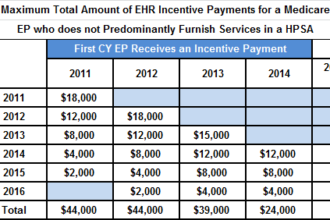Because most chronic diseases are highly preventable and frequently manageable it cannot be denied that there is a lot Americans can do to improve their own individual health and ultimately, the overall health of our country. The World Health Organization (WHO) estimates that eliminating three risk factors – poor diet, inactivity, and smoking – would prevent 80% of heart disease and stroke; 80% of type 2 diabetes; and, 40% of cancer.
Because most chronic diseases are highly preventable and frequently manageable it cannot be denied that there is a lot Americans can do to improve their own individual health and ultimately, the overall health of our country. The World Health Organization (WHO) estimates that eliminating three risk factors – poor diet, inactivity, and smoking – would prevent 80% of heart disease and stroke; 80% of type 2 diabetes; and, 40% of cancer.
An important piece of maintaining good health is early detection which can only be achieved with regular doctor’s appointments and willing patient involvement and how we align those two aspects of health care is critical to achieving healthy outcomes. The use of information technology in health care provides infinite opportunities to streamline health care processes and reduce costswhen it comes to coordinating cohesive health care plans for any patient, most especially those who are already struggling with one or more chronic diseases.
The Health Information Technology for Economic and Clinical Health (HITECH) Act, and the meaningful use regulations being developed by theHHS Office of the National Coordinator for Health Information Technology (ONC)are a great step forward and will provide physicians who become meaningful users of HIT with direct financial incentives to adopt certified electronic health records. Nearly every delivery system reform being implemented or discussed involves using health IT (HIT) to be able to measure and improve health outcomes, track chronic disease and reduce medical errors.
According to ONC, only 25%of physicianoffices and 15% of hospitals use electronic health records(EHRs). We need to make sure these incentives are maintained in the tight budget environment, since the investment in HIT will lead to significant savings as more physicians use EHRs.
PFCD also supports additional incentives being considered by Congress such as:
- Small business loan guarantees to help practitioners not covered by the HITECH Act, like pharmacists, pediatricians and rural health providers;
- Liability safe harbors for practitioners who do adopt HIT, and
- Incentives for patients and caregivers to use electronic patient records.
Health Data Management Magazine’s “Chronic Care, Chronic I.T. Problems” highlights many of the advances being made in health IT to close the information gaps and foster more efficient and effective practices when it comes to care coordination, health care communication and the doctor-patient relationship.








